- Home
- Deborah Harkness
The World of All Souls Page 13
The World of All Souls Read online
Page 13
Date of birth: July 13, 1527
Astrological sign: Cancer
Physical description: Based on portraits of Dee, he wore the black robes of a scholar, a tight-fitting hood covering his head and extending down his neck, topped with a flat cap. A long white beard jutted from his chin.
A member of: Trinity College, Cambridge University
Family and romantic relationships: Of Welsh descent and married three times, with eight children by his third wife, Jane.
Personal history: John Dee was a famed natural philosopher and scholar of the sixteenth century. He conducted studies and experiments in astronomy, astrology, and alchemy, as well as practicing other occult sciences, including divination. He was an immensely learned man, a fellow at Trinity College, and he traveled extensively in Europe. There he studied the natural sciences, including mathematics, cartography, and astronomy, and was part of a network of scholars. Dee advised the Crown, particularly Queen Elizabeth I and her counselors, on diverse matters, including British imperialism; in fact, he is credited with coining the term “the British Empire.” He also championed a plan for the founding of a national British library. Queen Mary did not support his plan, however, so he set about gathering his own collection at his home in Mortlake outside London. Eventually Dee owned more books than both Oxford or Cambridge universities combined, and scholars from all over Europe came to visit his remarkable library. It is perhaps no surprise, then, that at one time Dee had possession of the mysterious and much-sought-after Book of Life.
Dee married three times and is best known for his relationship with his third wife, Jane, and their large and unruly household. This included four sons and four daughters, as well as a number of servants and scientific assistants. Chief among those assistants was the notorious Edward Kelley, a persuasive man of questionable morals.
Dee’s association with Kelley began at a difficult and rather incautious moment in Dee’s life. When they met in 1582, Dee had become impatient to learn and understand more of the universal laws of nature than had yet been revealed to him in his books. He focused on magic and the occult sciences, believing that angels, because they were closer to God, would be in possession of the knowledge he sought. Dee began to look for a person who could help him converse with these supernatural beings. Before Edward Kelley approached Dee, he had already employed a series of unsatisfactory scryers, or crystal gazers, to help him pierce the veil between the mortals and the all-knowing angels of heaven. To Dee’s delight, Kelley proved to be an adept spiritual intermediary. Kelley’s output was remarkable for its sheer volume as well as its complexity, and Kelley’s reported conversations lent themselves to a great deal of study and interpretation. Many have thought Kelley’s reports were fantastic flights of fancy, but Dee seems to have sincerely believed that Kelley was an authentic spiritual medium.
In 1583 the Dee family and the Kelleys began to travel throughout Europe, attempting to persuade other thinkers and rulers of the usefulness of their communication with angels. While in Prague in 1587, Edward Kelley revealed the extraordinary demand made by an angel: that the two men begin to share everything, including their wives. Initially dismayed, John Dee was soon convinced, and somehow he persuaded his wife to participate in the scheme. Although the two couples complied, this cross-matching marked the end of Dee’s relationship with Kelley. Dee and his wife returned to their home in Mortlake, where Diana and Matthew visited them soon after.
Following Jane’s death in 1604 of the bubonic plague (the same outbreak that probably also killed three of his daughters), Dee spent the rest of his days a widower, in the company of his one surviving daughter.
See also: Jane Dee, Edward Kelley, Joanna Kelley
ROBERT DEVEREUX
Full name: Robert Devereux, the Earl of Essex
Origin of name: Devereux is after the name of a town in Normandy.
Date of birth: November 10, 1565
Astrological sign: Scorpio
Physical description: A long-legged man with a mop of curly hair and an insolent expression
A member of: The Knights of the Garter, the Privy Council
Family and romantic relationships: A distant relative of Queen Elizabeth I (they were first cousins, twice removed). At twenty years old, he became a ward of William Cecil, Lord Burghley. He married Frances Walsingham (daughter of Elizabeth I’s spymaster, Sir Francis Walsingham), by whom he had three surviving children. He also fathered a son by his mistress, Elizabeth Southwell.
Personal history: An English nobleman, Robert Devereux was a chivalrous and lively young man when he joined Elizabeth’s court in 1584. He curried favor with Her Majesty by entertaining her at cards, dancing, and plying her with poetry and theatrical amusements. He was almost the polar opposite of Elizabeth’s clever and conservative adviser William Cecil. Where Cecil was a reserved and calculating man, Devereux was boyish, vivacious, and even dangerously impudent with the queen. She found his temperament and attentions enlivening and attractive, and she encouraged his military career. Many others in Elizabeth’s closest circle, including William Cecil and Walter Raleigh (as well as her vampire spy Matthew Roydon), warned her that Devereux was untrustworthy, but for years Elizabeth ignored their counsel. She had no equals in her court and was constantly surrounded by formal or servile courtiers and advisers. Devereux’s familiarity and flattering attention (from a man thirty-three years younger) was welcomed by this vain, increasingly lonely woman.
Soon after Diana and Matthew left London and timewalked back to the present, the relationship between the queen and the earl began to sour. Devereux made a series of brash and foolish missteps, including participating in Sir Francis Drake’s English Armada against her wishes. Furthermore, he neglected to destroy the Spanish battle fleet when given the opportunity. He impulsively pursued their treasure ships instead and left England vulnerable to Spain’s navy. A few years later, after boldly promising to crush the Irish rebellion, Devereux led a huge army of English soldiers into a series of costly and ineffectual battles, finally brokering a very poor truce with the Irish leader Hugh O’Neill, to the delight of the Irish and the dismay of Queen Elizabeth. On his return Devereux was put on trial and placed under house arrest. Rather than seeking forgiveness, he became resentful and led a failed rebellion against Elizabeth. He was convicted of “conspiring to . . . slay the Queen,” and executed on February 25, 1601. It reportedly took three strokes of the ax to behead him.
JULIETTE DURAND
Origin of name: Durand has evolved in many different countries and derives from the Latin duro, meaning “to harden” or “make enduring.”
Date of birth: Late seventeenth century
Date of rebirth: Late seventeenth century
Physical description: Juliette was mixed-race (Afro-Caribbean and Caucasian) and appeared to be in her early twenties. She was startlingly beautiful, with fragile, delicate features and large, dark green eyes. Despite her beauty, there was something about her that seemed off, with the unmistakable signs of mental illness.
Family and romantic relationships: Juliette was a daughter of Gerbert d’Aurillac and an agent of his twisted plans. One of those plans involved Juliette becoming close to Matthew, a relationship that did not end well.
Personal history: Juliette was a beautiful tragedy of a vampire. Rescued from the brothels of Cairo in the late seventeenth century by Gerbert d’Aurillac, she found herself in a darker, though more luxurious, hell. Gerbert carefully selected Juliette from the prostitutes on offer because he felt she would appeal to Matthew Clairmont’s appetite for the exotic outsider. After turning her into a vampire, Gerbert carefully molded her into Matthew’s perfect partner, training her to know philosophy and science, to like the music Matthew liked, to understand the art that Matthew collected. Juliette became Gerbert’s Trojan horse, designed to be pushed inside the de Clermont family and to bring down Gerbert’s old enemies by uncovering their secrets.
Gerbert’s training methods unfortunately drove Juliette mad. At first even her madness was welcome as it made Matthew even more protective and devoted. Over the decades, however, it made her more difficult to control. Eventually Matthew found out how Juliette came to be a vampire, and their relationship was destroyed. He left her, in New York, more than a hundred years ago. Juliette was heartbroken, her mind irreparably fractured. When she disappeared, Matthew believed her to be a casualty of World War I. But Juliette survived and came back to exact the Congregation’s justice on Diana and Matthew, as well as her own personal revenge. Their terrifying confrontation in Madison would have ended with Matthew’s death if it hadn’t been for Diana’s intervention. Instead Juliette’s troubled life ended in a ball of Diana’s witchfire.
E
ABRAHAM BEN ELIJAH OF CHELM
Full name and other names: Elijah Ba’al Shem, Eliyahu Ba’al Shem of Chełm, Eliyahu ben Aharon Yehudah (Elijah son of Aaron Judah)
Origin of name: Elijah was a Hebrew prophet of the ninth century. The name means “my God is Yahweh.” In Hebrew, Ba’al Shem means “master of the Name.” This refers to the practice of some kabbalistic rabbis using the names of God to practice healing and blessing.
Date of birth: 1550
Physical description: Young but with worry creases around deep-set gray eyes and a graying dark brown beard when Diana met him.
A member of: The Chelm coven/gathering
Personal history: Abraham ben Elijah was a Polish rabbi who served as chief rabbi of Chelm. The “Ba’al Shem” came from his reputation for having created the first golem using a shem—that is, letters from one of the holy names of God. He was also a weaver and a friend of Rabbi Loew in sixteenth-century Prague, which is where Diana met him.
See also: MAGIC: Familiars
ÉTIENNE
A servant in sixteenth-century Sept-Tours who, along with fellow servant Thomas, looked after Diana Bishop.
F
RANSOME FAYRWEATHER
Origin of name: Fayrweather has English and Scottish origins, from the Middle English “fair weder” and is a nickname for a person with a sunny temperament.
Date of birth: February 14, 1783
Astrological birth sign: Pisces
Date of rebirth: Unknown
Physical description: Ransome’s eyes are cold chips of green glass in an otherwise handsome, relaxed face. His hair is a rich mahogany brown.
A member of: The Domino Club
Family and romantic relationships: Ransome is Marcus Whitmore’s eldest son from his lawless vampire brood in New Orleans. Matthew de Clermont is his grandsire. He is now part of the Bishop-Clairmont scion.
Personal history: Ransome Fayrweather was sired by Marcus Whitmore, who in his carefree early days as a vampire created his children from New Orleans’s youngest and most errant citizens. Riotous and irresponsible, they risked discovery every time they went out after dark and attracted unwanted human attention. They also carried, unknowingly, the blood-rage gene. Matthew was dispatched by the de Clermonts to get rid of his son’s troublesome children, and Juliette assisted him in the gruesome task.
Ransome, a man who Gallowglass says would put Lucifer to shame, survived Matthew and Juliette’s cull of his brothers and sisters and is now the owner of New Orleans’s Domino Club on Royal Street. He never forgave Matthew for what he did but has finally struck a truce with him and joined the Bishop-Clairmont scion.
JACQUELINE VAUTROLLIER FIELD
Date of birth: Unknown
Family and romantic relationships: Jacqueline came from a French family. Her first husband was printer Thomas Vautrollier and her second was Richard Field.
Personal history: Jacqueline was a French Huguenot refugee, like her first husband, fleeing the Wars of Religion in her home country (following the St. Bartholomew’s Day Massacre) to set up a new life in England. Thomas soon became established in London as a printer, associated with producing books of Protestant theology as well as classical authors. Following his death Jacqueline became a printer and collaborated with Richard Field, marrying him soon after.
As a strong-minded young woman, Jacqueline was only too happy to give Diana all the advice she needed when she visited the Fields’ shop in Blackfriars.
RICHARD FIELD
Origin of name: Field is of Anglo-Saxon origin, from “feld” meaning variations of “open country.” This was a habitational name for someone who lived on land that had been cleared of forest but not cultivated.
Date of birth: 1561
A member of: The Stationers’ Company, London
Family and romantic relationships: Son of Henry Field, a tanner in Stratford-upon-Avon and, it has been speculated, family friend of the Shakespeares’. He married Jacqueline Vautrollier, widow of the Huguenot immigrant printer Thomas Vautrollier.
Personal history: Richard Field, a printer and publisher who was based in Blackfriars, London, spent his early years with his family on Bridge Street in Stratford-upon-Avon. When his father died in August 1592, John Shakespeare, William Shakespeare’s father, was one of the local officials who appraised the property he left. It is generally acknowledged that Richard and William would have known each other growing up. In 1579 Richard became an apprentice to the London printers George Bishop and Thomas Vautrollier and, when Vautrollier died in 1587, Richard worked with his widow, Jacqueline.
Richard and Jacqueline eventually married in 1589, and it was their shop near Ludgate that Diana visited to pick up a book for Matthew; it is also where she bought her commonplace book. Shakespeare collaborated with the Fields, and Richard printed the early editions of three of his poems. Richard also printed books for other leading English publishers, including William Ponsonby, who published George Chapman’s The Shadow of Night, as well as works that promoted the strong Protestant sympathies of him and his Huguenot wife. He rose to be one of the twenty-two master printers of the Stationers’ Company and died in 1624.
BENJAMIN FOX
Full name and other names: Benjamin Fuchs, Benjamin de Clermont, Benjamin ben Gabriel, Benjamin the Blessed, Nickie-Ben
Origin of name: The name Fox has variations in Old English and German (Fuchs) referring to attributes of the animal and allusions to the “cunning of a fox.”
Date of birth: c. 1075
Date of rebirth: First quarter of the twelfth century
Physical description: Benjamin was not large or physically intimidating. He had dark blue eyes set in a long, pale face under dusky hair.
A member of: The Order of the Defeated Dragon
Family and romantic relationships: Benjamin was Matthew de Clermont’s blood son, estranged from his father and banished from the de Clermont family. Sire of Father Hubbard and in turn grandsire to Jack Blackfriars. He was linked with the notorious Erzsébet Báthory, as well as with a twelfth-century witch who gave birth to a vampire baby in Jerusalem who died in infancy. The witch Isobel Gowdie was one of Benjamin’s lovers and had his child, a Bright Born named Janet Gowdie (grandmother to Janet Gowdie, who is now a member of the Congregation).
Personal history: Benjamin is the malevolence at the center of the All Souls world and the darkest manifestation of the Vampire Curse, passed on to him by his sire. After his rebirth as a vampire, Benjamin’s ambition was to revenge himself on Matthew and the de Clermonts, find the Book of Life, and discover the secret to conceiving his own child with a witch. As cunning as his name, Benjamin Fox learned to survive through manipulation and fear and was a master at the art of disappearance.
Originally a German Crusader marching to the Holy Land with Count Emicho’s army in 1096, Benjamin joined up with Godfrey de Clermont’s knights when the count’s army was defeated in Hungary. In this way he met Matthew de Clermont. At first Matthew cultivated Benjamin as a valuable ally for the family; his mother was the daughter of a prominent merchan
t in the Levant, and he had learned some Hebrew and Arabic. But Matthew realized too late how mistaken he was to trust Benjamin. When Benjamin threatened to expose to humans in Jerusalem both the de Clermont family secrets and the existence of all creatures, Matthew lost control. Rather than killing Benjamin, Matthew punished him by turning him into the very thing he threatened to reveal. Matthew then disavowed Benjamin and left him to fend for himself during the first difficult years of vampire youth. Matthew didn’t expect him to survive.
Benjamin did survive, however, and built up a network of dangerous blood-rage vampire children, as well as allies, the most important of whom was Gerbert d’Aurillac. As a member of the Order of the Defeated Dragon, Benjamin spent time in Hungary with the Drăculeşti and Báthory families. He was also implicated in Erzsébet Báthory’s gruesome murders there.
Benjamin began searching for the Book of Life in the middle of the fourteenth century, before Matthew was interested in it. In his efforts to conceive his own child with a witch, he kidnapped and raped witches for centuries, largely around the area of Chelm in Poland. The Congregation turned a deaf ear to complaints, because Benjamin was protected by Gerbert. In 1662 Benjamin had an affair with a witch, Isobel Gowdie, in the Scottish Highlands (where he was known as Nickie-Ben). He left her soon after, never knowing she was a weaver and had conceived what would be his Bright Born child, Janet Gowdie.
Benjamin’s life was dedicated to exacting revenge on the de Clermont family and to creating his own personal army of powerful blood-rage vampires. He caused the de Clermonts huge anguish, right up until he was finally killed by Diana Bishop.
FRANÇOISE
Françoise is a loyal vampire servant in Matthew’s household, of French origin like Pierre, and described as a rawboned woman.

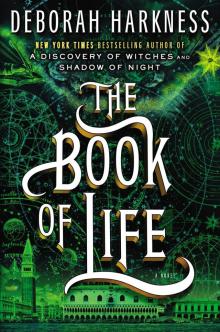 The Book of Life
The Book of Life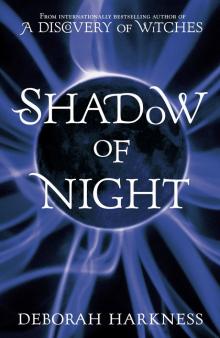 Shadow of Night
Shadow of Night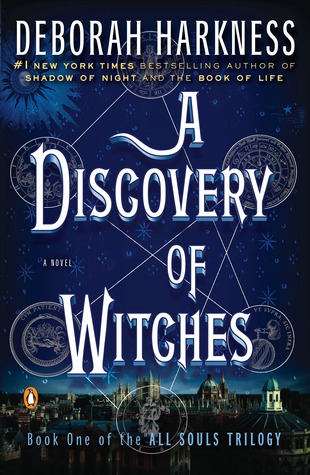 A Discovery of Witches
A Discovery of Witches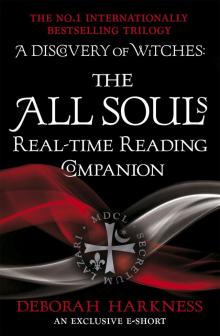 The All Souls Real-Time Reading Companion
The All Souls Real-Time Reading Companion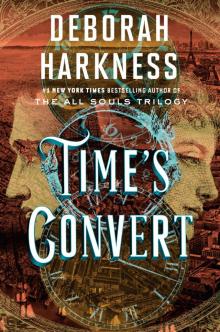 Time's Convert
Time's Convert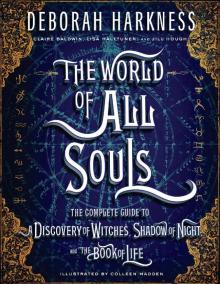 The World of All Souls
The World of All Souls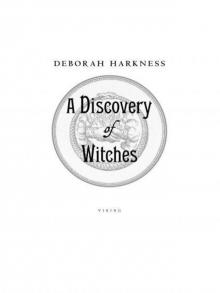 A Discovery of Witches: A Novel (All Souls Trilogy)
A Discovery of Witches: A Novel (All Souls Trilogy) Shadow of Night: A Novel
Shadow of Night: A Novel